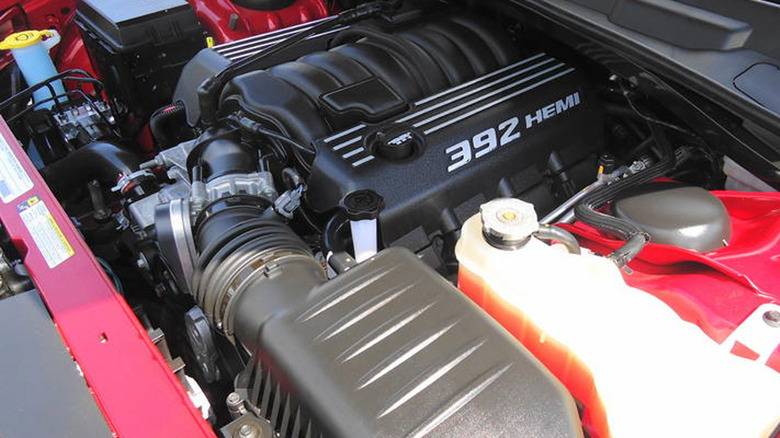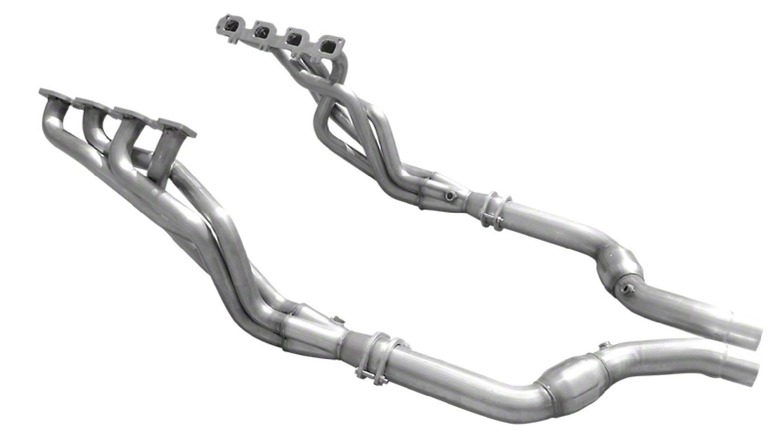How Much HP Can Long Tube Headers Add To A 6.4 HEMI Engine?
Chrysler has produced the Gen-3 HEMI engine since 2003, and since that time, it has undergone some substantial changes. Beginning with the 5.7-liter HEMI, the Gen-3 HEMI platform soon included various displacements ranging up to 6.4 liters (392 cubic inches) and methods, such as superchargers, to gain horsepower while maintaining some modicum of fuel efficiency. One of the best ways to gain bolt-on horsepower from a 6.4-liter HEMI is to improve the airflow through it. That's why we see substantial power gains from engines employing forced-air-induction over naturally aspirated versions, however, the cost of adding a supercharger to a HEMI can be prohibitive.
A cheaper way to move more air through a 6.4 HEMI is to improve the flow of exhaust gasses out of the engine, starting with a set of long tube headers. MotorTrend shared how Hot Rod magazine's Dan Foley was able to quantify the horsepower gain by running a 2015 Scat Pack Shaker Dodge Challenger on a dyno before and after the addition of long tube headers.
Before any work was done, the 392 (6.4-liter) HEMI, advertised at 485 horsepower, produced 384 horsepower and 389 lb-ft of torque at the rear wheels. After swapping the stock exhaust for the long tube header version, the same car made 410 horsepower and 417 lb-ft of torque on the dyno, a gain of 26 horsepower and 28 lb-ft of torque.
[Featured image by Ammar shaker via Wikimedia Commons | Cropped and scaled | CC BY 3.0]
Can anyone install long tube headers on a 6.4 HEMI engine?
While it's never safe to say anyone can do anything, installing long tube headers on a 6.4 HEMI engine is doable for a capable DIY mechanic. The job requires some basic mechanic tools like wrenches and a selection of short and long sockets of various sizes, including 3/8-inch, 10mm, and 15mm, and a few different length extensions, and swivel-head ratchet makes it easier. The hardest part is getting the vehicle high enough to allow manipulation of the headers into place while also having access to the exhaust manifold bolts from the top side. Ideally, this job is best done on a car lift, but with a mixture of determination and patience, it can be accomplished in a garage with good jackstands and a floor jack.
If you're unsure of your mechanical abilities or safely lifting and securing your vehicle high enough, there's no shame in taking it to a shop for this upgrade. You'll likely need to take your car in anyway if you don't own the right tuner to make it work like it should. Foley admits that the header installation wasn't "for the faint at heart." However, it was worth it, in his opinion, for the performance bump and the sweet exhaust sounds emitting from the Challenger's tailpipes.

